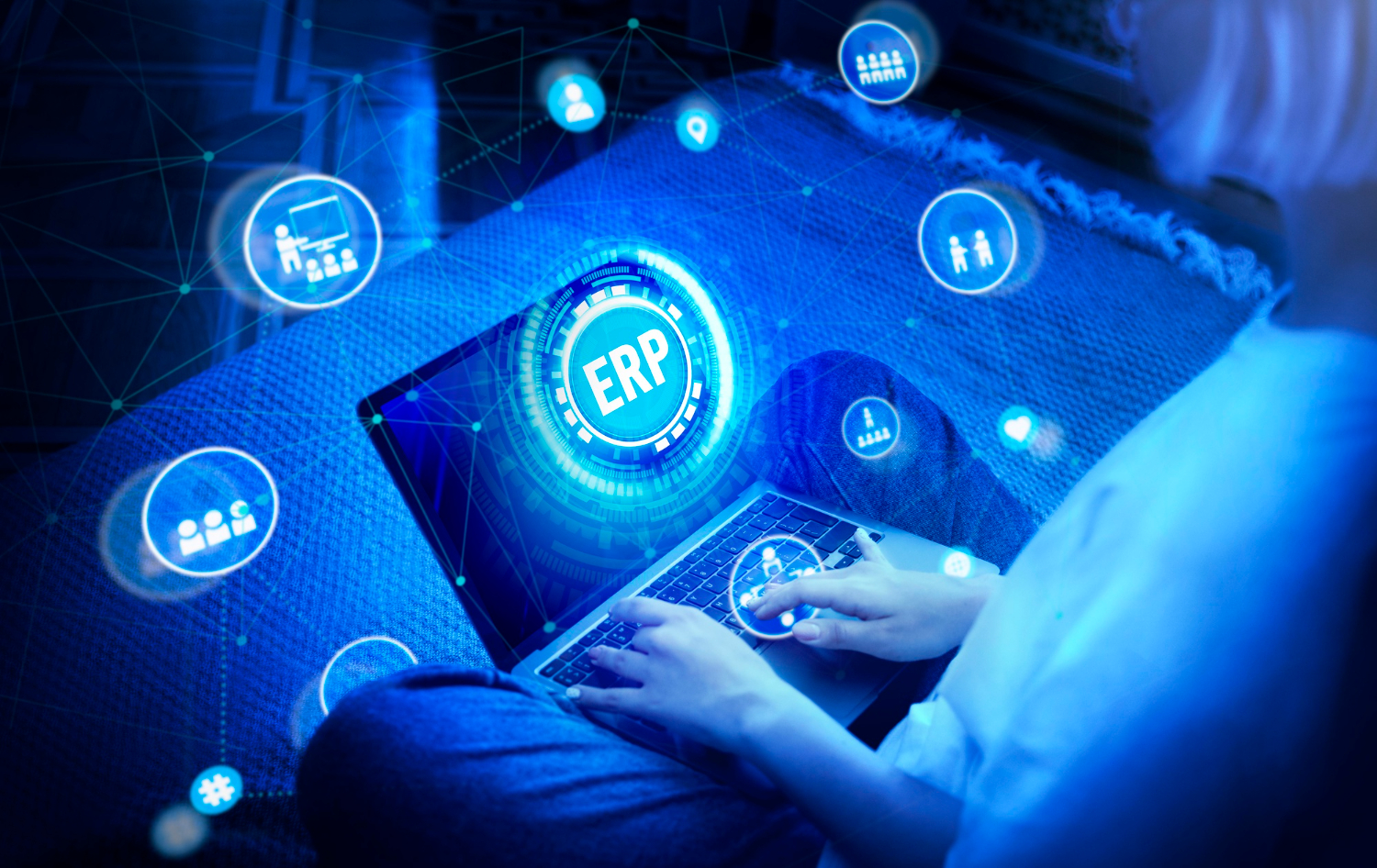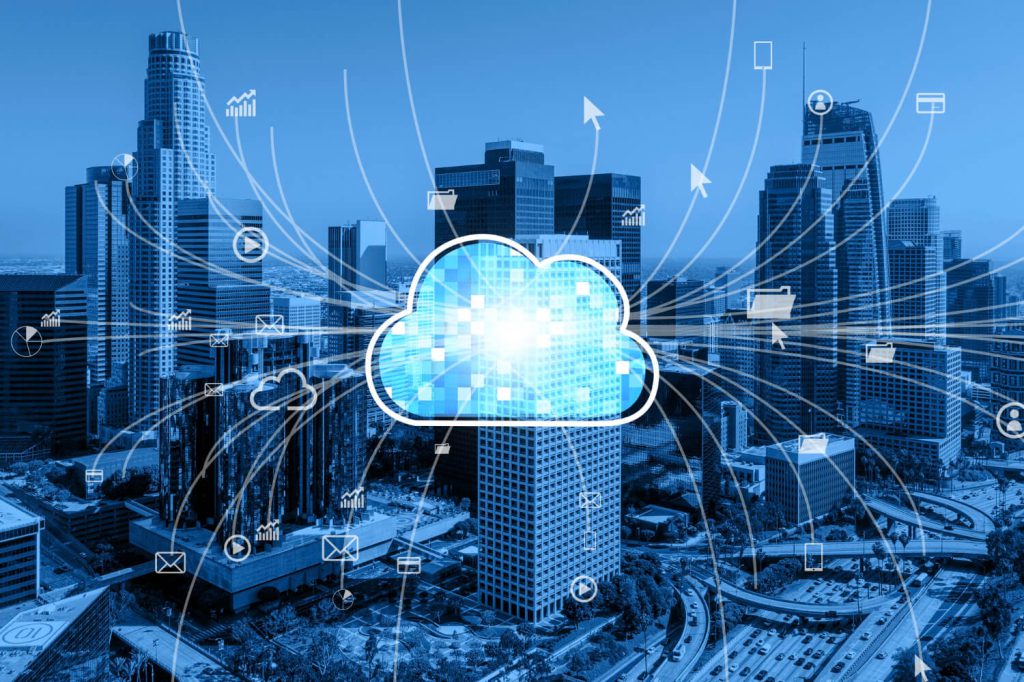with us.


What is an ERP system and what is its purpose?
What is an ERP system?
The ERP system (Enterprise Resource Planning) is a set of computer applications and tools designed to integrate and manage the various areas and processes of a company efficiently. Its main objective is to centralize and coordinate the activities of an organization, thus allowing complete and real-time control of resources, operations, and information flows.
The ERP covers various functional areas of a company, such as sales management, purchasing, inventory, finance, human resources, production, logistics, among others. It provides a single and unified platform that allows process automation, resource optimization, and improved decision-making.
In summary, the ERP system is essential for the control and management of resources and processes in a company, enabling greater productivity, agility, and competitiveness in the market.
Components and Basic Structure of ERP
The ERP consists of various modules or components that cover the different functional areas of a company. These modules are interconnected to share information and facilitate the comprehensive management of the organization. The basic components and their structure are:
Finance: Manages the financial aspects of the company, such as general accounting, accounts payable, accounts receivable, budgeting, treasury, and fixed asset management.
Sales and Distribution: Handles sales management, from quotation and order generation to billing and supply chain management. Includes functions such as customer management, inventory control, logistics, and demand planning.
Purchasing and Procurement: Involves the procurement process of materials and services for the company. Includes functions such as supplier management, inventory control, purchase order requisition, and supplier evaluation.
Production: Deals with the manufacturing process of the company, from production planning to quality control. Includes functions such as bill of materials management, production scheduling, cost control, and manufacturing process tracking.
Human Resources: Manages aspects related to the company’s personnel, such as employee management, payroll, recruitment, talent development, training, and performance evaluation.
Project Management: Handles the planning, monitoring, and control of projects, including resource allocation, cost control, task management, and milestone tracking.
These are just some of the most common modules in an ERP system, but the structure and components may vary depending on the specific needs and characteristics of each company.
The integration of these modules allows for an updated flow of information throughout the organization, facilitating decision-making and resource optimization.
How does the ERP system integrate different processes and departments in an organization?
The ERP integrates the various processes and departments of an organization through a centralized database, along with a set of interconnected modules. These modules cover key areas such as finance, sales, purchasing, inventory, production, human resources, among many others.
In the integration process of these modules, the system allows for sharing and accessing real-time data. This greatly facilitates collaboration and decision-making based on updated information. For example, when a sale is registered, the system automatically updates inventory, generates invoices, and records corresponding accounting data. Additionally, departments can share information and work together more efficiently.
The ERP system provides automated and standardized workflows, improving efficiency and reducing potential errors. Users can access important information and carry out specific tasks within the system, eliminating the need to work with multiple isolated systems.
Examples of common functions covered by an ERP system in various areas of a company include
Inventory management: activities such as tracking and controlling inventory levels, purchase and order management, demand planning, warehouse management, supply chain optimization, among others.
Human resources: managing employees, payroll administration, tracking attendance and hours worked, recruitment and personnel selection, development and training, performance evaluation, benefits and leave management, among others.
Accounting and finance: processes such as accounts payable and accounts receivable management, recording financial transactions, generating financial statements, bank reconciliation, cost control, budgeting, fixed asset tracking, tax management, and legal compliance.
Production: planning production, scheduling manufacturing orders, managing materials and resources, monitoring the production process, quality control, work order management, supply chain control, among others.
Sales and CRM (Customer Relationship Management): managing sales opportunities, tracking customers and contacts, contract management, sales and quotation control, sales and performance analysis, marketing campaign management, customer service, and after-sales support.
Project management: planning and tracking projects, resource allocation, task and deadline management, cost and budget control, collaboration and communication among team members.
These are some examples, and the exact functionality of an ERP system may vary depending on the specific needs of each company and the software provider.
The main advantages and benefits of an ERP system
The main advantages and benefits of an ERP system are:
Facilitates the integration of all data and processes within the company into a single platform. This avoids data duplication and enhances collaboration between departments.
Provides a centralized and real-time updated database, enabling decision-making based on accurate and reliable data.
Automates tasks and workflows, streamlining business processes and reducing time and errors in operations.
Assists in optimizing and utilizing company resources such as inventory, labor, and assets, enabling more efficient and cost-effective management.
ome considerations when selecting an ERP system
Some considerations when selecting an ERP system for your company include:
Assess Specific Requirements: Evaluate and document the company’s specific requirements in terms of functionality, business processes, and focus areas to identify necessary features and modules.
Scalability: Ensure the ERP system is scalable and can grow with the company as needs and demand increase.
Integration Capability: Consider the system’s ability to integrate with other existing applications and systems within the company, such as CRM systems, e-commerce platforms, and warehouse management systems, to avoid compatibility issues.
Total Cost of Ownership: Evaluate the total cost of ownership of the ERP system, including licenses, implementation, customization, maintenance, updates, and technical support, considering both initial and ongoing costs.
Vendor Experience and Reputation: Research and assess the experience, reputation, and track record of the ERP system provider to ensure they have a solid history of successful implementations and reliable technical support.
User Interface and Usability: Verify that the system’s interface is intuitive and user-friendly for end-users with varying levels of technical skills.
Customization Flexibility: Consider the system’s ability to be customized to adapt to specific business processes and needs.
Continuous Support and Updates: Ensure the vendor offers reliable technical support and is committed to the continuous development of the system through regular updates.
Security Measures: Review the security measures implemented in the system to protect confidential business information and ensure compliance with data privacy regulations.
References and Testimonials: Request references and read testimonials from other companies that have implemented the ERP system to gauge its performance and its ability to meet business needs.
Every company has its own unique needs and priorities. It’s essential to conduct a thorough analysis and consult with experts before making a final decision regarding ERP system implementation.
The importance of implementing an ERP system
The importance of implementing an ERP system cannot be overstated. Selecting the right ERP system for a company is crucial to ensure a successful implementation and maximize the benefits it can bring to the organization. Such a decision can transform business operations, optimize efficiency, and improve strategic decision-making.
The implementation of an ERP system is a complex and significant process that affects multiple areas and functions within an organization. Therefore, it is essential to take the necessary time to carefully evaluate and select the system that best fits the specific needs.
Choosing the appropriate and efficient ERP system can yield noticeable results. A successful implementation can provide a comprehensive view of the company, enabling better coordination and collaboration among different departments. By centralizing data and processes in a single system, information gaps are eliminated, and transparency is fostered throughout the organization.
[starbox id='1']
Conoce más novedades

DevOps and Emerging Methodologies in Software Development
Quote DevOps and Emerging Methodologies in Software Development

Cloud Computing: What is it and what is it used…
Cloud Computing: What is it and what is it used…

Quoting Understanding SAP R3 and S4 HANA Management Systems
Quoting Understanding SAP R3 and S4 HANA Management Systems







Leave a Reply